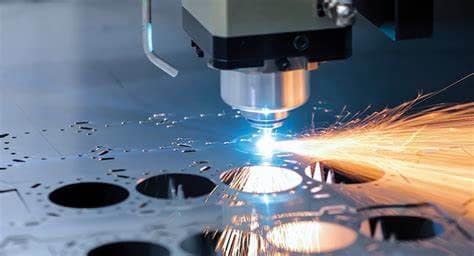Introduction: The Critical Role of Medical Device Machining
When it comes to saving lives, precision is everything. Medical device machining plays a crucial role in manufacturing the life-saving instruments and implants used in modern healthcare. From intricate surgical tools to biocompatible implants, every medical device must meet the highest standards of accuracy and safety. But what makes medical device machining so unique? And how is cutting-edge technology improving patient outcomes? Let’s explore the innovations driving this essential industry.
What Is Medical Device Machining?
Medical device machining refers to the high-precision manufacturing of medical components, including:
- Surgical instruments (scalpels, forceps, robotic surgery tools)
- Orthopedic implants (hip replacements, spinal implants)
- Dental prosthetics (crowns, bridges, implants)
- Micro-components (catheter tips, pacemaker parts)
These components demand extreme accuracy, biocompatibility, and flawless finishes to ensure patient safety and effective treatment.
The Challenges of Medical Device Machining
1. Micro-Machining for Tiny Components
Many medical devices, such as pacemaker components and catheter tips, require micron-level precision. This demands advanced micro-machining techniques to achieve flawless details.
2. Biocompatible Materials
Medical implants must be biocompatible to prevent rejection or adverse reactions. Common materials include:
- Титан (lightweight, strong, corrosion-resistant, ideal for implants)
- Stainless Steel (durable and widely used in surgical tools)
- Cobalt-Chromium Alloys (high wear resistance for joint replacements)
- PEEK & Polymers (lightweight, MRI-compatible materials for spinal implants)
These materials are difficult to machine due to their hardness, requiring specialized cutting tools and techniques.
3. Ultra-High Surface Finish Requirements
Medical devices must have ultra-smooth surfaces to prevent bacterial growth and ensure proper function. Processes like polishing, lapping, and electropolishing are critical in achieving the required surface finish.
4. Strict Regulatory Compliance
The medical industry is one of the most regulated sectors. ISO 13485 certification and FDA approvals are mandatory, ensuring every machined part meets the highest quality and safety standards.
Advanced Techniques in Medical Device Machining
Swiss CNC Machining
Swiss-style CNC machines provide exceptional precision for small, intricate parts, making them essential for machining tiny screws, dental components, and catheter tips.
Laser Machining & Micro-Drilling
Laser technology allows for high-precision cutting, micro-drilling, and surface texturing without damaging delicate materials.
5-Axis Machining for Complex Geometries
Medical implants often require organic, anatomical shapes that traditional machining methods can’t achieve. 5-axis machining enables precise contouring of custom implants.
The Future of Medical Device Machining
Innovation in medical device machining is driving the future of healthcare with:
3D Printing for Custom Implants – Patient-specific implants improve surgical outcomes.
AI & Machine Learning – Smarter manufacturing improves quality control and efficiency.
Miniaturization of Devices – Smaller, more effective medical implants enhance patient comfort.

Conclusion: The Life-Saving Impact of Medical Device Machining
The world of medical device machining is a blend of art and science, pushing the boundaries of precision manufacturing to improve healthcare. Whether it’s a robotic surgery tool or a life-saving implant, machining technology is making groundbreaking medical advancements possible. As healthcare evolves, so will the machines that shape the future of medicine.